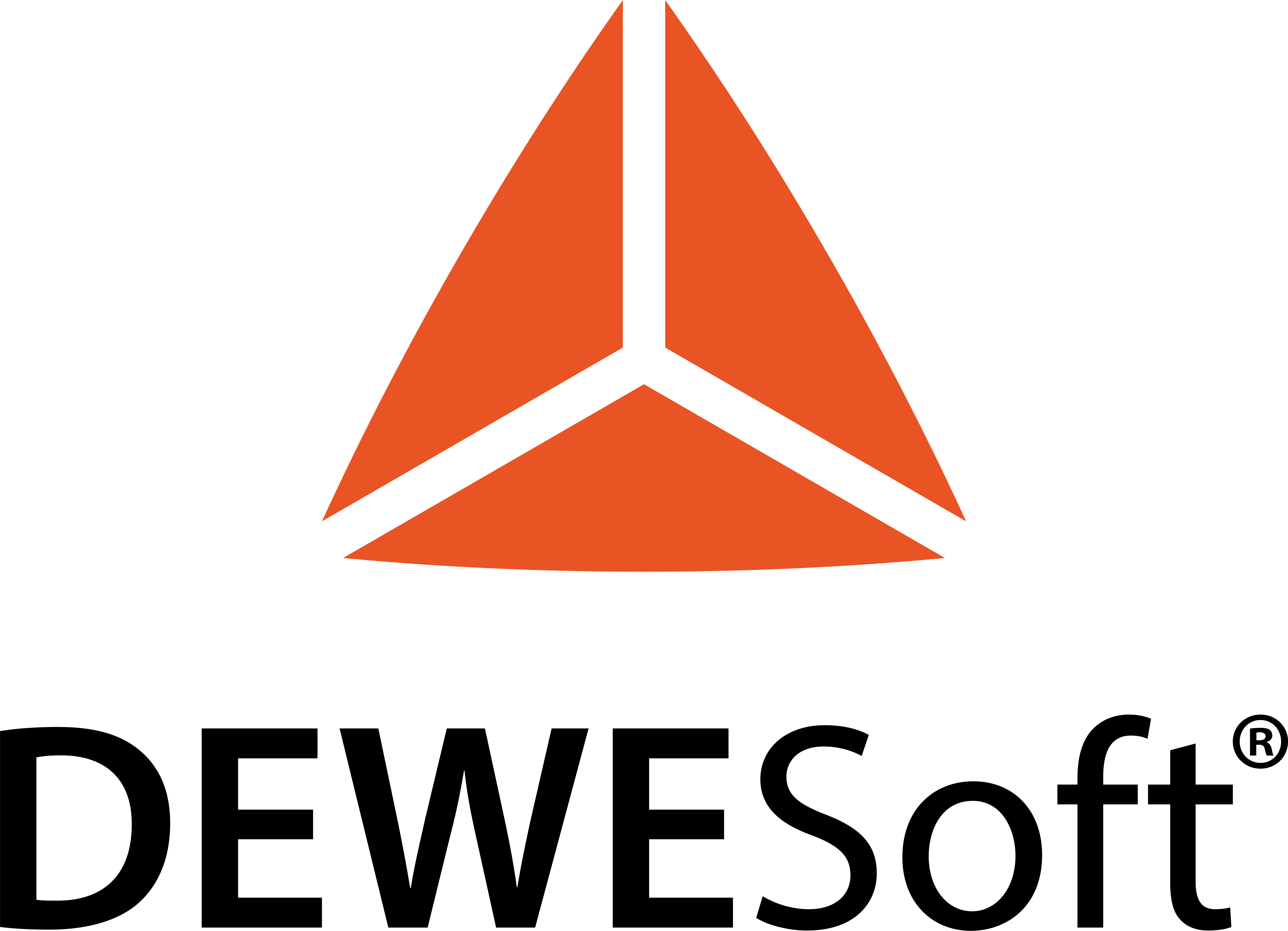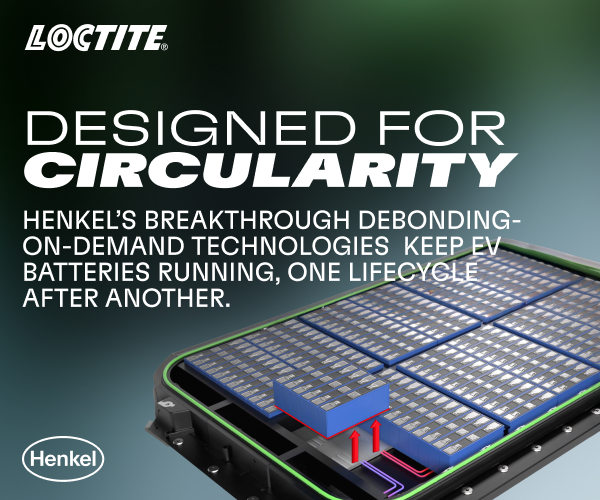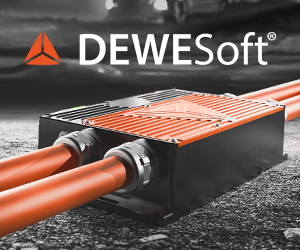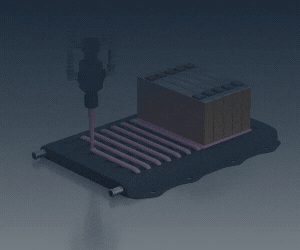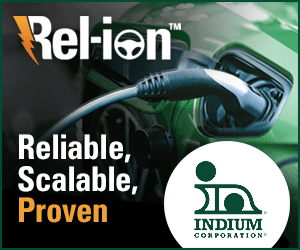Metis Engineering’s CEO Joe Holdsworth explains advances in EV sensor technology
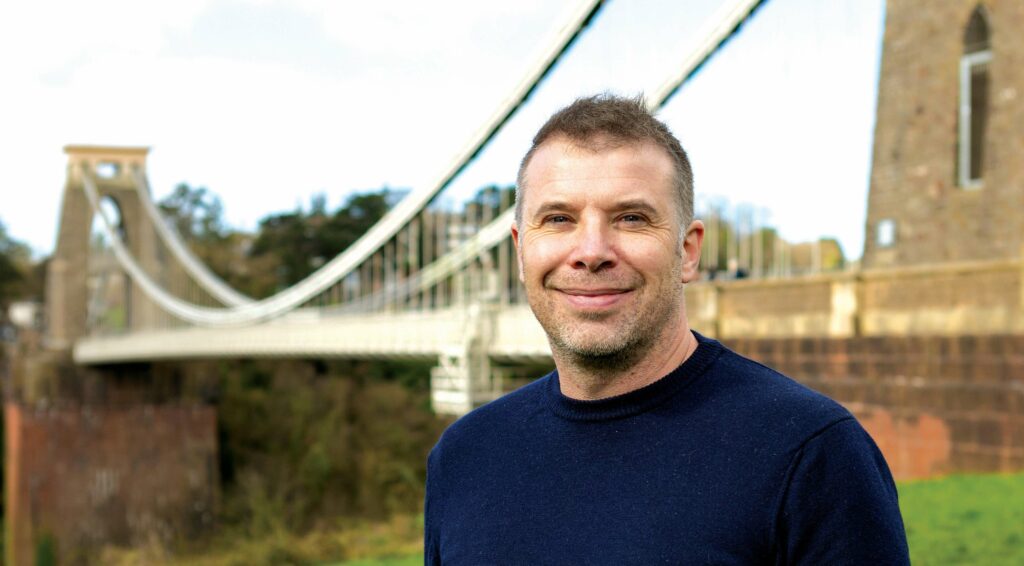
(Image courtesy of Metis Engineering)
Sensing the way ahead
Joe Holdsworth, managing director of Metis Engineering, speaks to Will Gray about world speed records, systems engineering and the importance of vehicle sensors
Big data is driving the future of automotive development, and Joe Holdsworth is one of the sensor system pioneers building the next-generation technology to deliver it. He spends his time researching new innovations, searching for solutions to problems many people do not even know exist – all in the quest for better understanding of EV performance.
“I just love looking through the latest sensor catalogues, seeing what’s there and thinking what I could do with them,” he explains with a smile. “When it comes to EV development, the more data you’ve got on these systems, the better the decisions that can be made in terms of efficiency and performance.
“The sky’s the limit, really; there’s some amazing stuff out there. The accelerometer and MEMS [micro-electro mechanical systems] technology has come on leaps and bounds, and things will become more and more integrated, have higher accuracy and be more reliable. The limiting factor is not the hardware, it’s your own imagination.”
Holdsworth was not originally so obsessed with sensors. He studied Aeronautical and Astronautical Engineering at Southampton University (UK) because it offered a “reasonably wide choice of things to do” when it came to employment. When he graduated, he was still not clear on what direction to take, so he went into finance to “make some money.”
His role was not a million miles from engineering, however, because it required programming and systems design to develop a web-based workflow tool for people to book trades. He learned a lot on the job, but when the financial crash came in 2008–leading his firm’s managed fund to drop $1 billion in five days–his job quickly disappeared.
After struggling to find another position in finance, he turned to engineering and joined Go Science, a company developing unmanned submarines designed to look for oil and gas. That gave him further experience in systems engineering, developing his skills in embedded coding and system design for robotics and autonomous vehicle controls.
Having never really studied programming and controls systems, he was fast becoming an expert and he explains: “At university, you learn how to learn. It teaches you what tools and methods are available to solve problems and whether or not you master them there, it means that in the future when you come up to a problem, you know what toolset to use.
“It was never really about the subject matter for me, it was about learning the best way to take up knowledge and learn. That stood me in good stead because, as a systems engineer, you’re always looking at new technology coming in and thinking how to apply it. It’s about breaking it down into basic building blocks, then building up the complexity.”
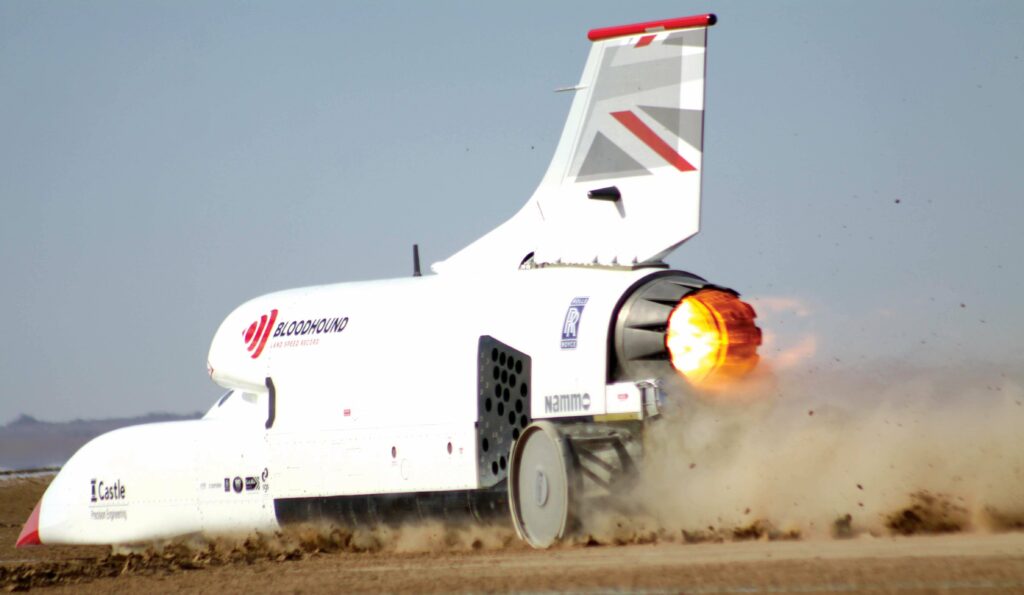
(Image courtesy of Bloodhound LSR)
World record dreams
When the time came to move on, Holdsworth was seeking another exciting adventure and planned to travel to Australia before returning to a role in finance. However, a visit to a Bloodhound Land Speed Record event with his dad made him rethink his plans–and it changed the course of his life.
“My dad has always been into land speed records and he actually went out to watch Thrust SSC out in the desert,” explains Holdsworth. “He joined the 1K Club, the Bloodhound supporters club, and he asked me to go along with him to an event. I thought it was cool, so I handed in my CV and it just happened another guy was leaving–so I got a job!
In 2016 he set up his own company, Metis Engineering, and began to pick up contract jobs with other businesses during down periods in his ongoing work with the land speed record team.
He worked with Brompton Bicycles and had a short stint with Reaction Engines, developing the Full Authority Digital Engine Control system for a hybrid rocket-jet engine. Then, he took on a major three-year project with Williams Advanced Engineering, working on control systems for the racing version of Jaguar’s I-Pace, used in the one-make eTrophy series.
“During Bloodhound, I went and did other things because I knew that project would finish at some point,” he explains. “I’d had such a great time with it, I didn’t know how I would follow it, but a lot of the work on Bloodhound showed me that there were areas where sensors could be made better, so that was my focus when I started Metis.
“On the I-Pace project, I worked on the vehicle control module, which communicates with all the individual modules around the car to manage what the vehicle does. Production vehicles have lots of different modules but Jaguar wanted to take as much weight out of the car as possible, including replacing all the modules with a single Williams control module.
“If you create a vehicle from scratch, you’re designing the system so you’ve got complete ownership of it and know how everything works. On this car, Jaguar had lots of different stakeholders involved and it was hard to get all the information about how all the different modules worked and communicated with each other.
“There were modules for charge control, power delivery and battery management. Even the headlights were CAN [controller area network]-controlled and required constant polling to keep them awake or asleep. So, when we took everything out, we had to replicate all the communications the system was expecting to see. It was fascinating and it gave me a huge amount of learning.”

(Image courtesy of Metis Engineering)
Flying high, breaking records
In the same period that Holdsworth was working on the I-Pace, he was also working with Electroflight, a technology company focused on accelerating the development of electric powertrains. As part of the Rolls-Royce-led Accelerating the Electrification of Flight research initiative, Electroflight was working to develop a plane to set a new world speed record.
The development was based on a Nemesis NXT racing airframe, a three-bladed prop driven by three YASA 750R electric motors on a common prop shaft with peak power of 700 kW, all supported by one of the most power-dense flying battery packs in the world containing 6000 cells.
Much of Electroflight’s focus was on the power management of those cells, and Holdsworth was at the centre of that development. “I wrote the software and worked on the vehicle control module,” he recalls. “You pick battery cells based on what you want them to do, and we wanted as high capacity as possible but also a very high-power capability, so the discharge rate would be high. That means you’re going to run the cells hot, so looking at cell temperatures and voltages and monitoring them for any problems was key to assessing how far to push it.
“Most BMSs have a cell temperature coverage of less than 50 percent, but that wasn’t good enough for flight, so we developed a full temperature coverage system to measure every single cell. We also developed some complex insulation monitoring, looking for resistance breakdown between the high-voltage lines and the chassis, to protect from high voltages.
“The record when we started was around 210 knots and we ended up doing 300 knots for the 3 km and just shy of that for the 15 km, and we also set a time to climb record. The system was really well designed; it performed as modelled and it was really special to get the records because we’d been trying to do that for so long with Bloodhound.”
The sensor revolution
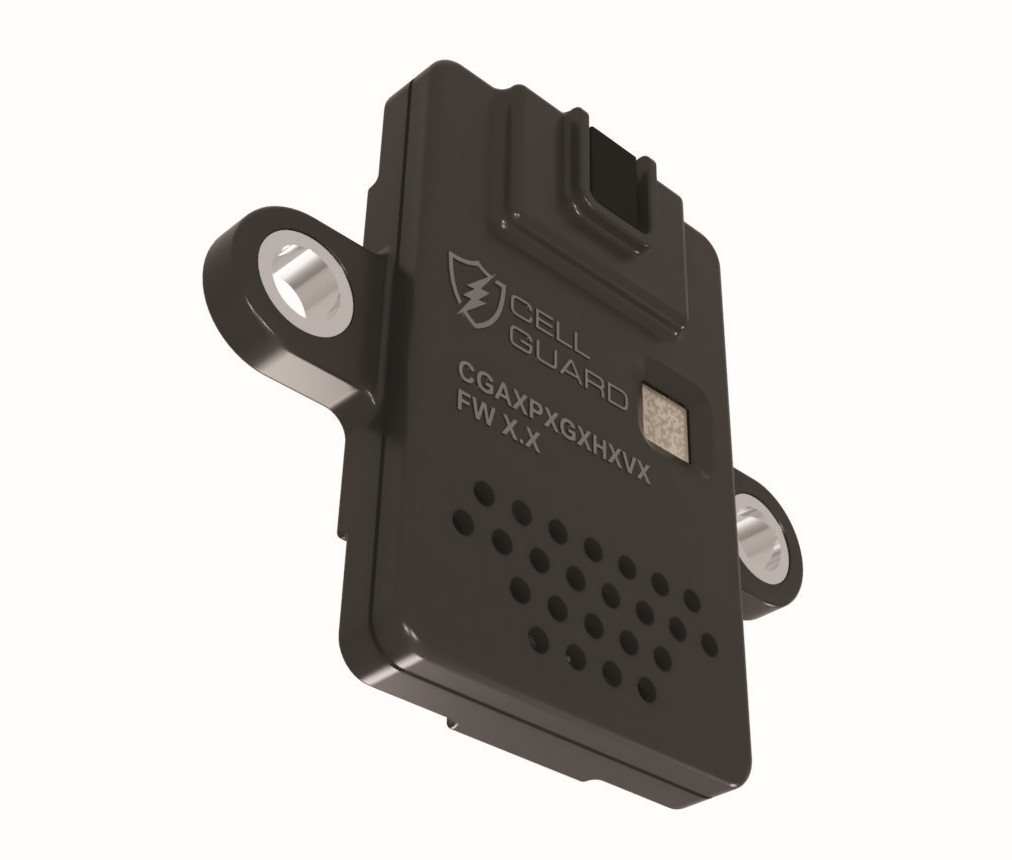
(Image courtesy of Metis Engineering)
After the Bloodhound trip to Hankskeen Pan, having seen the writing on the wall, Holdsworth decided to “double down” on his own business in 2019. He began to develop bespoke sensor systems for EVs and the company has since grown into a team of six, with a client base of 450 different companies.
“I learned from Bloodhound and the other projects I worked on that if you’re willing to put the work in, you don’t need a big team to achieve things,” he says. “We offer sensors that are quite small but measure many different parameters. Normally, you have one sensor for each measurement, but these can do it all and you choose the features you want.”
The first product Metis developed was, unsurprisingly, a sensor to support better battery management, called Cell Guard. Building on his experience from the BMS on the racing I-Pace and the Electroflight plane, Holdsworth and his expanding team focused on creating a sensor solution that could improve on existing market standards.
“Most of the systems out there just look for temperature and voltages, but there’s other things that affect the battery too,” he explains. “Water ingress can be a problem, so we have a sensor that detects humidity and we’ve just released one with a hydrogen sensor, which looks for any electrolysis from water inside the pack.
“Another area of interest is impact damage, so we developed an accelerometer sensor that looks into the crash case, measuring acceleration and duration. We also have one to detect cell venting, which uses the vent to detect if some of your cells are getting hot if you don’t have a full coverage on your BMS, and we have an HVAC air quality system too.”
The sensors are manufactured by many different companies and Metis integrates them all with its own systems. The units are small and non-contact and designed to be placed inside the battery case near the vent port. They plug in as another node on the CAN bus and have a sleep feature set to wake up on reaching a threshold, such as impact or temperature.
As well as being used for onboard management, monitoring and diagnostics, they can also provide more detailed information for a vehicle’s battery passport. This all goes back to the big data theory, that the more data you have on a system, the better you know its state and the better it can be managed.

“It’s down to the manufacturer to calculate the degradation, but our data feed into the lifing data, so they can calculate with enhanced accuracy,” says Holdsworth. “We typically supply to smaller companies because they tend to be able to move faster and take this kind of thing on, but in time we’d like to get some of the major car manufacturers using them.”
Holdsworth clearly sees a lot of opportunities to develop. So, could modern technology lead to even better chances of chasing that land speed record in the future?
“If there was a blank sheet and we were to go back to Bloodhound, if it ever got any money again, yes, there are things we’d do differently,” he acknowledges. “I think instead of the ICE engine to drive the rocket fuel pump, it would probably be electric. In 2012 there wasn’t much electric vehicle powertrain technology available, but a lot has changed since then.
The question you really have to ask is how relevant is a land speed record in this this day and age?
“Venturi holds the EV speed record, but what is the most important factor these days? Is it speed? Or is it efficiency? It’s probably range now, to be honest, and how fast you can charge it–but I guess for most people, a speed record for battery charging is not so exciting!”
Click here to read the latest issue of E-Mobility Engineering.
ONLINE PARTNERS



